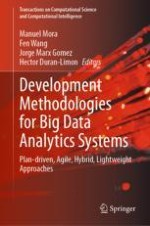This book presents research in big data analytics (BDA) for business of all sizes. The authors analyze problems presented in the application of BDA in some businesses through the study of development methodologies based on the three approaches – 1) plan-driven, 2) agile and 3) hybrid lightweight. The authors first describe BDA systems and how they emerged with the convergence of Statistics, Computer Science, and Business Intelligent Analytics with the practical aim to provide concepts, models, methods and tools required for exploiting the wide variety, volume, and velocity of available business internal and external data - i.e. Big Data – and provide decision-making value to decision-makers. The book presents high-quality conceptual and empirical research-oriented chapters on plan-driven, agile, and hybrid lightweight development methodologies and relevant supporting topics for BDA systems suitable to be used for large-, medium-, and small-sized business organizations.
